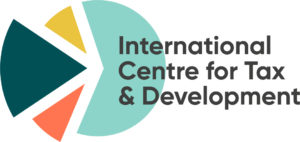First published in World Bank Blogs – Let’s Talk Development, 15th March 2023
As digital technologies continue to gain momentum in lower-income countries, tax authorities are increasingly adopting technology solutions to improve their core functions and to collect revenue more efficiently.
Our recent paper reviews recent literature on the use of technology for tax administration. Technology has the potential to improve tax collection in three areas: identifying the tax base, monitoring compliance, and facilitating compliance. But even the most user-friendly technology cannot function without basic infrastructure and a stable internet connection. Resistance from taxpayers and collectors, an unsupportive regulatory environment and lack of strategy for adoption by institutions also hinder the potential benefits of new technology. In this blog, we propose reforms to ensure investments in new technology improve efficiency and revenue collection.
Potential of technology in taxation
Technology can transform three core functions of tax administrations:
- Identifying the tax base. Determining an accurate picture of tax compliance by businesses and individuals poses a considerable challenge for any authority. By using third-party information and digitising the registration of taxpayers, technology can improve the capacity to identify the tax base through comprehensive databases of taxable individuals and legal entities, as well as their activities and assets. Similarly, by automatically capturing transactions through electronic fiscal devices (EFDs) or digital payments, technology can assist in more transparently determining taxes due.
- Monitoring compliance. Modern data analytic tools can help tax authorities monitor and enforce compliance through automated cross-checks of self-reported tax liabilities against other data sources. Moreover, the analysis of such third-party data could support risk-based audits, potentially improving the transparency and efficiency of the auditing process.
- Facilitating compliance. Technology such as EFDs, e-filing and e-payment can improve taxpayer experience and reduce compliance costs by optimising communication with taxpayers, and by eliminating travel, queuing and error-prone manual input of data and information. Technology-enabled impersonal interactions between the revenue authority and the taxpayer would also better shield taxpayers from corrupt practices.
However, there are barriers to realising technology’s full potential.
Technology limitations and how to address them
- Infrastructure: If hard infrastructure, such as electricity and a stable internet connection, is missing, or if the technology chokes or crashes in peak periods, or functions only intermittently, this can lead to user frustration. In addition, because small-scale, rural and less educated taxpayers have limited internet access, they are the most negatively affected by inadequate infrastructure. Tax authorities could reach these groups of taxpayers with limited internet access by offering use less sophisticated technologies such as offline declaration and payment solution using non-smart phones.
- The human factor: Taxpayers and tax officials may resist the introduction of new technology for varied reasons: lack of awareness and training, high adoption costs or loss of opportunity for corruption and avoidance. On the one hand, more sophisticated taxpayers could exploit loopholes in the technology to avoid taxes. On the other, less IT-savvy taxpayers may mistrust the new solutions. Different approaches should be followed for such taxpayers, with increased enforcement and vigilance on the former and trust-building for the latter. At the same time, tax officials may prefer using manual practices due to entrenched habits and fixed mind-sets, rent seeking and lack of awareness. This can be tackled through an adequate change management strategy, as well as targeted training and assistance.
- Institutional strategy: The effectiveness of new technologies can be significantly hampered where there is no strong buy-in from key leaders, and no long-term national strategy. To run smoothly, sequencing of technology adoption is also crucial since many functions are inter-dependent. For example, a new integrated and automated tax administration system is unlikely to succeed if the pre-existing data are not first properly cleaned up. Likewise, retraining tax officials should precede introducing the new technology and continue after the launch.
- Regulatory framework: Data sharing between revenue authorities and public and private actors does not happen systematically, often due to privacy and confidentiality concerns. Policymakers can set up a central automated platform which would be accessible from multiple government institutions and banks to identify taxpayers and crosscheck information. Lastly, as technology evolves, regulatory frameworks should be updated for cybersecurity to preserve privacy and confidentiality and to protect citizens from data leakages.
Policy and research agenda
As technology develops at a faster and faster pace and its role grows in tax administration, the availability of administrative tax data will only increase. Tax authorities can seize this opportunity by collaborating with researchers to evaluate the impact of technology interventions, guide their expansion or modification, and understand their efficiency and equity implications. Such collaboration could also be beneficial to upgrade the capacity of staff in tax administrations to use data analytic tools.
- Republished from World Bank Blogs – Let’s Talk Development
- Related Working Paper and Research in Brief.




